
The 5th Citizen-Scientist International Symposium on Radiation Protection
For further scientific elucidation of health risks of radiation exposure, caused by the 2011 TEPCO Fukushima Daiichi nuclear power plant accident, in order to practice better public protection and response measures
Date: Monday, September 21, 2015 【Day1/Day3】 Japanese
Venue: International Conference Room, National Olympics Memorial Youth Center
3-1 Kamizono-cho, Yoyogi, Shibuya-ku, Tokyo 151-0052 Japan
Day2 Program
Session 1. Monday, September 21, 2015
Session 1: Biological effects and public health (starts at 9:30)
Co-chairs: Keith BAVERSTOCK (University of Eastern Finland)、SHIMAZONO Susumu (Faculty of Theology, Institute of Grief Care, Sophia University)
Round-table discussion: Low-dose radiation exposure and tasks for public health
Name |
Lecture Title |
Abstract |
Slides |
|
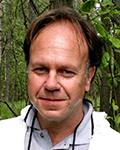 |
Impacts of Radiation on Wildlife of Chernobyl and Fukushima |
(17.4mb) |
||
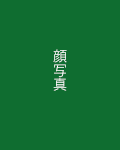 |
Hiroshima, Nagasaki, Hanford, and Fukushima:Critical Review and Re-Analysis of Radiation Epidemiological Studies |
(2.6mb) |
||
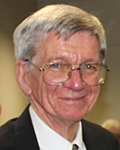 |
Cancer risks following low dose radiation from CT scans – What can be said about reverse causation? |
(728kb) |
||
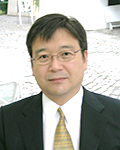 |
How to Exchange Information on Scientific Evidence – In a Case of Radiation Health Effects |
(834kb) |
Day2 Tentative schedule (subject to change)
9:00 ~ |
Doors open |
9:30 ~ |
Session 1: Biological effects and public health |
14:30 ~19:00 |
Round-table discussion: Low-dose radiation exposure and tasks for public health |
TSUDA Toshihide
Affiliation:Department of Human Ecology, Graduate School of Environmental and Life Science, Okayama University
Research Areas:Epidemiology, Environmental Health
Profile
Professor, Graduate School of Environmental and Life Science, Okayama University (Specialty fields: Epidemiology and Environmental Health)
1958: Born in Himeji City, Hyogo Prefecture
1985: Received medical license after graduation from Faculty of Medicine, Okayama University Medical School
1989: M.D., Ph.D., Graduate School of Medicine, Okayama University Medical
1990: Assistant (Hygiene), Okayama University Medical School
Instructor, Okayama University Medical School
Instructor, Okayama University Graduate School Dentistry and Pharmaceutical Sciences
2005: Professor (Environmental Epidemiology), Graduate School Environmental Sciences, Okayama University, which was reorganized to be part of the current Graduate School of Environmental and Life Science
How to Exchange Information on Scientific Evidence – In a Case of Radiation Health Effects
TSUDA Toshihide
Abstract
Today, it is likely a common notion among those with any opinion regarding radiation health effects that risk communication on radiation health effects within Japan is extremely chaotic. The fact that the dialogue in risk communication, based on accurate risk, is interrupted for fear of causing anxiety among residents is against the very principle of risk communication. For someone like me, who specializes in quantitative estimation of health effects due to environmental contamination such as chemicals, in addition to conducting research on risk communication, today’s situation is a crisis as well as a circumstance stimulating my own intellectual curiosity.
In order to deepen the understanding of the risk communication issue, I would like to cover 3 perspectives: 1) 100 mSv threshold discourse, 2) 2013 WHO health risk assessment report, and 3) biological monitoring. First, the 100 mSv threshold discourse is an expression of opinion that there is no knowledge of carcinogenesis in radiation exposure to doses below 100 mSv, usually represented by a statement such as, “No radiation-induced cancer is expected or discernible at 100 mSv or below.” This expression is nothing more than a basic mistake stemming from misinterpretation of paragraph A86 in the ICRP 2007 report (Publication 103) by the International Commission on Radiological Protection, “(...) There is, however, general agreement that epidemiological methods used for the estimation of cancer risk do not have the power to directly reveal cancer risks in the dose range up to around 100 mSv” and paragraph D251 of UNSCEAR 2008 report, “(…) Neither the most informative LSS study nor any other studies have provided conclusive evidence of carcinogenic effects of radiation at smaller [than 100 mSv] doses.” In other words, the description that cancer risk in the LSS cohort of Hiroshima/Nagasaki, averaged across all ages and all types of solid cancer, was not statistically significant at the 5% level (it was statistically significant at the 8% level; Brenner 2014) as of 2003 was misinterpreted as “No cancer is expected/certain due to radiation exposure.” I have brought up this issue multiple times. This is a mistake still used at the Cabinet meetings and in government public announcements despite being brushed off by such solid consensus as “Nobody says such s a thing any more.”
Next I will talk about the fact that hardly any discussion has been held based on the February 2013 WHO health assessment report on radiation health effects as well as the 2011 radiation exposure in Fukushima. This is due to the fact that it is not widely known in Japan that this report quantitatively shows excess occurrence of thyroid cancer, leukemia, breast cancer and other solid cancers. Explanation of the content of this report, any subsequent information, and what can be grasped from all the information will be presented as materials for discussion.
Furthermore, as the movement of iodine 131 after the accident is still unclear, I will attempt to deduce the movement based on the current observation of thyroid cancer detection in those age 18 or younger at exposure in Fukushima Prefecture. I will then propose measures to be considered (application of biological monitoring).
The above 3 discussions are intended to help you grasp a general sense of the types of risk communication dysfunction occurring in Japan. The reason why communication dysfunctions, such as talking past each other, or even the lack of communication, are appearing in the modern Japanese society is because of a fundamental factor that the Japanese even lack a basic knowledge of the requirements for persuasion and debate. The Greek philosopher Aristotle said, “Of the modes of persuasion furnished by the spoken word there are three kinds. The first kind depends on the personal character of the speaker; the second on putting the audience into a certain frame of mind; the third on the proof, or apparent proof, provided by the words of the speech itself.” (Rhetoric, Japanese translation published by Iwanami Bunko; English translation by W. Rhys Roberts). These were called ethos (ἦθος; the listener gets a certain impression of the speaker), pathos (πάθος; listener’s emotions are moved), and logos (λόγος; persuasion by proof), respectively. According to Aristotle, writers on rhetoric in ancient Greece directed the whole of their efforts towards achieving pathos. Whether people are being trained in rhetoric in present-day Japan is a different matter, but I think pathos is the only factor considered in rhetoric and persuasion. Furthermore, these discussions in present-day Japan crucially lack ethos and logos, and additionally, the situation is not even conducive to establishing an opportunity for information exchange or persuasion. Also related to the absence of logos is the pitiful reality of science education in Japan where the notion “What is scientific evidence?” is not shared.
In present-day Japan, not only is persuasion and dialogue crucially absent but so is the basic knowledge of rhetoric. Nevertheless, in regards to the absence of information exchange on scientific evidence, there is an immediate answer. All that needs done is for involved experts to bring references or data as evidence and to directly exchange information in open settings as many times as necessary until they reach consensus (or at least until common ground and differences of opinions become clear along with reasons for them). It is an obligation of experts to exchange information in their own specialty areas, either directly or through academic journals if they are going to call themselves experts. It could be said that the current state of Japan is such that this fact has been totally forgotten by researchers themselves, the media, government officials, etc., where discussions without direct dialogue keep going on, simply wasting time, and health effects and economic losses broaden. This might be a phenomenon unique to Japan where philosophical education in the high-level and middle-level education is completely absent in comparison to the west.
John Mathews
Affiliation:School of Population and Global Health University of Melbourne
Research Areas:Epidemiology
Profile
John Mathews is an epidemiologist with experience from Papua New Guinea, Oxford, Melbourne, Darwin and Canberra; he has advised government on many matters including Agent Orange, ionising radiation, pandemic influenza, SARS, Aboriginal health, BSE and v-CJD, research policy, health services and data linkage. He was Foundation Director of the Menzies School of Health Research (1984-99), and senior adviser with the Australian Government (1999-2004). More recently he has used de-identified Medicare records to define cancer risks following CT scans in childhood.
Cancer risks following low dose radiation from CT scans – What can be said about reverse causation?
John Mathews
Abstract
Rates of cancer are increased following low-dose radiation from computed tomography (CT) scans used for medical diagnosis. However, when the lag period between a CT scan and diagnosis of cancer is very short, it is likely that the cancer was not caused by the radiation, but rather that the CT scan was prompted by early symptoms of cancer (reverse causation) or by the need to investigate a precancerous condition (confounding by indication). We modelled the incidence of cancer following diagnostic CT scans in our cohort of almost 11 million young Australians. We find that reverse causation explains most cancers occurring at lags of less than 12 months, but only a small proportion at longer lags. The excess relative risk estimate for cancers apparently caused by CT scans is 0.056 per mSv, with 95% credibility intervals of 0.047-0.065, at lag periods as short as 2-3 years. Estimates from the Life Span Study (LSS) of atomic bomb survivors are much lower. We suggest that the average risk of cancer, per unit of dose, is greater at the lower doses from CT scans than at the higher average doses in the LSS.
Timothy A. MOUSSEAU
Affiliation:Department of Biological Sciences , University of South Carolina
Research Areas:Fukushima and Chernobyl Wildlife; Ecology; Evolution; Genetics; Adaptation
Profile
Timothy Mousseau is a Professor of Biological Sciences at the University of South Carolina (USC). He received Ph.D. in Biology in 1988 from McGill University. He is currently a visiting professor at Chubu University. Former positions include Associate Vice President for Research and Dean of the Graduate School at USC, and Program Officer for Population Biology at the US National Science Foundation. He recently served on National Academy of Science committees to examine health hazards related to nuclear power plant operations. He is a Fellow of the American Association for the Advancement of Science, the American Council of Learned Societies, and the Explorers Club (NYC), and is an elected member of the Cosmos Club (Washington, DC). His research is concerned with the ecology and evolution of animals and plants with a special interest in how adaptations to changing environments evolve in natural populations and the evolution of adaptive maternal effects. Since 2000 he and his colleagues have studied the impacts of radioactive fallout from the Chernobyl disaster on natural populations of birds, insects, plants and microbes, with more than 70 scientific publications on this topic since 2005, and 10 books and edited volumes and more that 180 scientific publications in total. More recently, he has travelled to Fukushima, Japan, to study the impacts of the high radiation levels found in this region. His research has been featured in the New York Times, The Economist, Scientific American, the BBC, and CBS’s 60 Minutes. His research combines field ecological surveys with advanced laboratory technologies including genomics, cytogenetics, quantitative genetics, radio-telemetry, and advanced statistical methods to discover and understand the mechanisms underlying variation among individuals, populations and ecosystems in their sensitivity to radioactive contaminants. One aim of his research is to determine whether or not organisms can adapt to radioactive environments.
Further information can be found at the USC Chernobyl + Fukushima Research Initiative website:http://cricket.biol.sc.edu
Impacts of Radiation on Wildlife of Chernobyl and Fukushima
Timothy A. MOUSSEAU
Abstract
Recent scientific studies of the plants and animals living in Chernobyl, Fukushima and other naturally radioactive regions around the world provide strong evidence that exposure to low dose radiation stemming from radionuclides in the environment can lead to elevated mutation rates, reduced fertility and longevity, increased rates of developmental abnormalities and tumors, reduced biodiversity and population abundances, and broader ecosystem effects. Analysis of these findings indicate that there is no threshold radiation level below which biological consequences are not observed and that even very low levels of exposure can measurably impact natural populations, particularly following multiple generations of chronic exposure. Dr. Mousseau will summarize and discuss studies on plants and animals in Fukushima and how these compare to previous findings from studies in Chernobyl. Comparisons will also be made to studies of atomic bomb survivors and medical radiation effects for patients with the aim of providing some insight concerning potential impacts to human populations living in radioactively contaminated regions of the world.
HAMAOKA Yutaka
Affiliation:Faculty of Business and Commerce, Keio University
Research Areas:Marketing Science, Innovation Management
Profile
Born in Hiroshima. He earned M.Eng. in nuclear engineering and Ph.D. in Marketing from Graduate School of Engineering, the University of Tokyo. Since 1996, he has taught marketing research, new product development, data analysis, and related subjects at the Faculty of Business and Commerce, Keio University. His major publications include Research on Word of Mouth Marketing and Science of Web Marketing. Since the Fukushima nuclear disaster, he has also been working on re-analysis of the radiation epidemiological data. Recent articles on this topic published in the 2015 issues of Kagaku (Science) include: “An Analysis of Fukushima Thyroid Examination,” ”Re-Analysis of the A-Bomb Survivor Data,” and “Re-Analysis of the Nuclear Worker Data.”
Hiroshima, Nagasaki, Hanford, and Fukushima:Critical Review and Re-Analysis of Radiation Epidemiological Studies
HAMAOKA Yutaka
Abstract
A-bomb survivor data is one of the most important in evaluating radiation effects to human health. Through a critical review and re-analysis of the Life Span Survey (LSS) Report 13 (Preston et al., 2013) and Report 14 (Ozasa et al. 2012), the following limitations were identified: (1) Available individual level data are tabulated with city, sex, and continuous variables categorized, such as dose, age at exposure and attained age. Such aggregation of data causes loss of information that leads to loss of statistical power, as confirmed by the re-analysis. It was also found that estimates of thresholds shifted upward with aggregation; (2) LSS Report 13 shows estimation using a linear model and restricting to the low dose range yields significant coefficients beyond the 0-125 mSv range. This is an inappropriate conclusion neglecting a decrease in the sample size. All data should be used so as not to lose statistical power. (3) This inappropriate analysis was not conducted in LSS Report 14, which analyzed full data with a linear spline model that allows a change in slopes at pre-determined boundary values. In LSS Report 14, six dose-response functions were formulated: linear (L); quadratic (Q); linear-quadratic (LQ); dose category dummy; grid-search-like threshold; and linear spline. Although the model fit was compared among nested dose-response functions L, Q, and LQ, the best model was not selected. In the re-analysis, kinked-at-2Gy and statistically estimated threshold models were added to the previous six dose-response functions. The linear model was selected as the best model according to the information criteria (AIC and BIC),.
Although no individual data is available from the LSS cohort, worker data from three U.S. Department of Energy nuclear sites (Hanford, Oak Ridge and Rocky Flats) are available. Gilbert et al. (1993) analyzed the tabulated data and failed to detect a significant relationship between cumulative doses and solid cancer mortality. This data was re-analyzed with individual level modeling: the binomial logit model for site-specific mortality, the multinomial logit model to estimate mortality due to one of several causes of death and the hazard model for the length of time before death due to solid cancer From each analysis significant coefficients were obtained for cumulative radiation doses and solid cancer mortality.
Major radiation epidemiological studies, such as the LSS, nuclear worker studies, and studies in Mayak and Techa River, have employed methodology to analyze stratified data. However, the re-analyses shown above indicate individual level modeling is effective in detecting low-dose health effects.
For the first round screening of the Fukushima thyroid examination, relationships between the thyroid exposure doses estimated by UNSCEAR and the number of thyroid cancer or nodules, were analyzed using publicly available municipality level data (N=59 municipalities). No significance was found for the prevalence of thyroid cancer (including suspicious cases), but the coefficient was positive and significant for smaller nodules. The analysis also showed a positive association with age at examination and a negative association with age at exposure, consistent with the LSS study. Follow-up studies of A-bomb survivors (Imaizumi et al., 2005) and Chernobyl (Hayashida et al.,2012) found those with nodules have a higher risk of developing thyroid cancer. As this is an ecological study based on aggregated secondary data, causality should not be inferred. However, the results might indicate an early warning for future incidence of thyroid cancer. An immediate measure is urgently needed.
Keith BAVERSTOCK
Affiliation:Department of Environmental Science, University of Eastern Finland
Research Areas:Environmental Science, Radiobiology
Profile

Keith Baverstock has worked in the discipline of the health effects of radiation for the past 40 years, initially for the Medical Research Council in the UK and then from 1991 for the European Regional Office of the World Health Organisation. Currently his research interests are in theoretical biology with particular emphasis on how ionising radiation adversely affects living systems. He is presently a Docent at the University of Eastern Finland.
SHIMAZONO Susumu
Affiliation:Faculty of Theology, Institute of Grief Care, Sophia University Emeritus professor of the University of Tokyo
Research Areas:Religious Studies, Death and Life Studies, Bioethics
Profile
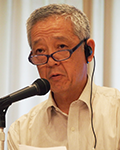
SHIMAZONO Susumu, is a Professor in the Faculty of Theology, Sophia University, and an Emeritus Professor of Religious Studies of the University of Tokyo, has published widely on modern and contemporary religious movements as well as on modern Japanese religions in general. He has published an English book titled From Salvation to Spirituality: Popular Religious Movements in Modern Japan (Trans Pacific Press, 2004).





